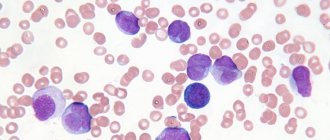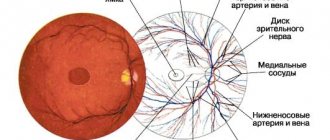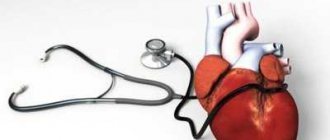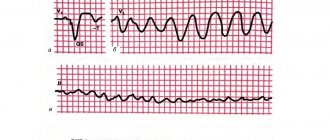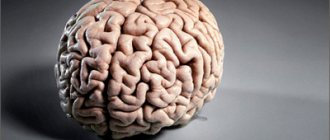Complications
The most severe complications of acute leukemia include:
- cerebral hemorrhage;
- bleeding;
- neutropenia;
- thrombocytopenia;
- infection (sepsis);
- splenic infarctions;
- necrosis of the oral mucosa, gastrointestinal tract, tonsils.
Such complications often lead to death. In addition, after a course of chemotherapy, severe consequences such as decreased immunity, decreased platelet counts, and anemia may occur. Often, leukemia becomes chronic, aggravating the course of the disease and reducing life expectancy.
If a patient has been diagnosed with a form of leukemia that has not previously been described in medicine, then most likely nothing can be done. It is not amenable to radiation or chemical therapy. Remission in this case is not achievable, and because of this, bone marrow transplantation becomes impossible.
In addition, sudden bleeding and hidden cerebral aneurysms can lead to death. Also, death can occur if a person is overtaken by an infectious complication with a weakened immune system.
Video: Why people die from leukemia
This question really worries absolutely everyone who has heard this difficult diagnosis - blood cancer. What to do? How to treat? And, most importantly, how long do people live with blood cancer? We will answer the most common questions of those who are in a difficult situation and are in a real fight for their lives. What determines life expectancy for blood cancer?
The first is the stage at which the disease is now, the second is what methods of treating the tumor were used, the third is what psychological state the patient is in now (how he tolerates the disease, is he determined to deal with his health problems).
How long do people live with blood cancer?
Leukemia is damage to blood cells by a cancerous tumor. There are a huge number of forms and manifestations of the disease, therefore, it is impossible to say unambiguously and clearly that the patient will live 10, 20 or 40 years.
Who is more likely to develop blood cancer?
There is no specific category of people here. This serious cancer can develop in young children, adults, and the elderly. Also, it is impossible to generalize patients by age, gender, lifestyle, etc. Of course, there are certain factors that influence the formation of blood cancer (we will discuss them below). But it can immediately be noted that leukocytosis occurs in its most severe form in young children, whose immunity has not yet been fully formed
What types of blood cancer do oncologists distinguish?
Blood cancers are classified depending on the blood cells affected by the tumor:
- Lymphocytic leukemia;
- Myeloblastic leukemia;
- Hematosarcoma;
- Lymphosarcoma;
- Angioma.
Also, depending on how exactly the disease (blood cancer) develops, 2 main forms of cancer are classified - acute and chronic. In the acute form, the disease rapidly affects blood cells and, therefore, death can occur much faster (if appropriate treatment is not resorted to). With the chronic development of a tumor, the disease develops extremely slowly (in this case, oncologists conclude that blood cancer can be cured, the chances are high).
How does the patient’s age affect the course of the disease (blood cancer)?
Oncologists note that the first determining factor in the successful treatment of blood cancer is the age of the patient. Why? Because the younger the patient, the higher the chances that the immune system will independently begin to fight the disease, helping the body recover. In older people, blood cancer occurs in a very severe form (again, due to age).
What is the prognosis for acute leukemia?
In the acute form of leukemia, unfortunately, the prognosis for survival is less favorable than in the chronic form. In simple words, if the disease is not treated, death will soon occur. With timely treatment, recovery occurs in 50% of clinical cases (if we are talking about child survival, then this is 95%).
If blood leukemia is diagnosed in an elderly person, what are the chances of survival?
Yes, there is, but again, timely treatment of the disease is necessary. The overall survival rate is 30%.
What is chronic leukemia?
In chronic leukemia, blood damage occurs in a very slow manner. Then comes a critical moment called blast crisis. After – the form of the disease is characterized as acute.
The survival rate for chronic blood cancer is 90%.
What is the prognosis for survival after chemotherapy?
A fairly large percentage of patients survive. The only exception is that if remission occurs within 18 months, then the survival rate is only 25%.
For reference!
The life expectancy of patients with cancer directly depends on the stage of blood cancer. At the first stage, life expectancy is more than 10 years. At the second stage – patients with leukemia live about 8 years or more; at the third and fourth stages - the total life expectancy is 1 year (maximum 3 years).
When does the disease reach the last, 4th stage?
Stage 4 cancer reaches its stage only if there was no initial treatment. Provoking factors for the disease (deterioration in well-being) are old age (meaning age over 70 years), heredity (one of the relatives had stage 4 cancer in a progressive form); the level of damage to the body by cancer cells is very high; another oncological disease (malignant tumor) is rapidly progressing in the body.
Is it possible to “touch” a tumor in blood cancer?
No, although blood cancer is called a malignant lesion of the body (tumor), it is not visible or perceptible. Cancer arises from just one cell of the bone marrow. Normal, physiological blood cells are red. But, with cancer, they quickly turn white. Over time, white blood cells completely replace red ones and this process will be defined as oncology. It is impossible to see or feel blood cancer, because the tumor does not physically exist.
Why does blood cancer occur?
Blood cancer or leukocytosis occurs due to the negative impact of radiation on the human body (this includes those people who live in an area with increased background radiation and those who are constantly near sources of radiation - x-ray doctors, laboratory assistants, doctors).
The risk group includes patients with poor heredity. That is, it is imperative for those patients whose relatives have been diagnosed with blood cancer to monitor their health.
Further, pathological changes in blood composition (degeneration of red blood cells into white ones) occur under the influence of chronic alcoholism, long-term smoking, and taking heavy hormonal medications.
Is it possible to get cancer from another person (for example, through blood)?
No, and any doctor will tell you this. Not a single healthy organism can physically and physiologically accept diseased cells from someone else’s body. Infection will not occur even in the case of direct infection (this fact has been confirmed experimentally).
Blood cancer is a very serious oncological disease, which is accompanied by a number of pathological changes and has a very negative impact on a person’s health. The peculiarity of this oncological disease is that the main pathological changes develop in the biological center of the whole organism, namely in the bloodstream. Accordingly, it is quite difficult to predict how long people will live with blood cancer, since all cases are individual, and there are a lot of factors that influence the forecasts.
Important! With the development of such an oncological disease, a person begins to experience other pathologies that are associated with increased bleeding and immunodeficiency.
As already noted, in different cases the prognosis for life expectancy will be different, since in order to draw any conclusions, it is necessary to first carry out a comprehensive diagnosis and test the most effective methods of treatment. Blood cancer cannot be called an age-related disease, since people of different age categories, gender and race are susceptible to it.
Today, there are several varieties of this cancer, and they are all characterized by different courses and features. The most common types of cancer include myeloblastic and lymphocytic leukemia; lymphosarcoma, hematosarcoma and lymphostasis are also found.
Diagnostics
There are three ways in which acute leukemia (leukemia, blood cancer) is diagnosed. How long patients subsequently live also depends on making a correct diagnosis and identifying the characteristics of the course of the disease.
The simplest method is to donate blood for a general analysis. By the way, the disease is often discovered during a routine examination. A decrease in hemoglobin level, platelet count and high white blood cell count cannot but arouse suspicion from the doctor.
The second method is specific. Involves bone marrow aspiration. The doctor removes cells from it to study under a microscope in the laboratory. The bone marrow can only be reached by piercing the outer layer of the bone with a special needle. Naturally, anesthesia is used.
And the third is called a bone marrow biopsy. He is the most difficult. Because the doctor removes a small part of the bone along with the bone marrow.
Background and symptoms
So far, doctors have not figured out the exact reasons that provoke the development of leukemia. Every year, about 35 new cases are registered per 1 million population. The structure of this mutation is very complex and depends on many purely individual nuances. However, doctors were able to identify factors that could provoke its occurrence. So, a mutation can occur due to:
- exposure to increased radiation;
- work in hazardous industries;
- hereditary predisposition;
- long-term chemotherapy;
- smoking;
- chromosomal diseases;
- severe viruses (HIV, for example);
- chemical poisons contained in the air or food.
All these factors can provoke acute blood leukemia. But how many people live with this disease? If you pay attention to the symptoms in time and seek help, you can prolong your existence. The patient should be concerned if increased weakness, rapid fatigue, unexplained changes in body temperature, night sweats, frequent headaches, sudden weight loss, pale skin and lack of appetite occur.
Causes
Scientists and doctors are still arguing about what exactly influences the occurrence of cancerous and malignant cells. But most doctors are already on the path to discovery, since most believe that both acute and chronic forms of leukemia arise as a result of pathology at the level of chromosomes within cells.
Recently, scientists discovered the so-called “Philadelphia chromosome”, which is located in the bone marrow and can lead to blood cancer - a mutation of red bone marrow cells. But as studies have shown, this chromosome becomes acquired during a person’s life, that is, it cannot be obtained from parents.
Acute myeloid leukemia occurs in people with Bloom syndrome, Down syndrome, Fanconi anemia, and in patients with Wiskott-Aldrich syndrome. Let's take a closer look at all the other factors that may influence the occurrence of this disease:
- Smoking. Cigarette smoke contains a huge amount of chemicals that directly affect blood cells when inhaled.
- Alcohol and nutrition. One of the endogenous factors that affect the entire body and every cell. In people with poor nutrition and problems with alcohol, the risk of developing cancer of any class increases by one and a half times.
- Working with hazardous chemicals. People who work in factories, laboratories, or with plastic, gasoline, or other petroleum products have an increased chance of getting sick.
- Chemotherapy and Radiotherapy. It happens that when treating a tumor, complications arise and another cancer appears.
- Immune deficiency. Any disease that weakens the immune system can lead to cancer.
- Genetics. Children whose parents had leukemia have a higher chance of getting the disease than the average child. Such people are usually included in the risk group, and they must undergo the necessary examinations annually.
To put it simply, first there is some external or internal effect on the cell. Then inside at the chromosomal level, it changes and mutates. After this cell divides, there are more of them. When a mutation occurs, the division program breaks down, and the cells themselves begin to divide faster. The death program also breaks down, and as a result they become immortal. And all this happens in tissues in the red bone marrow, which reproduce blood cells.
As a result, the tumor itself begins to produce underdeveloped leukocytes, which simply fill all the blood. They interfere with the work of red blood cells and platelets. And later there are many times fewer red blood cells.
What do doctors predict?
With blood cancer, the hematopoietic system is destroyed, and uncontrolled division of leukocytes is observed. First, the tumor grows in the bone marrow and after some time begins to replace normal hematopoiesis.
Doctors cannot say with certainty how long a person will live with acute blood leukemia, because... each case is individual. This is influenced by many factors: the form of the disease, the stage of its development, the age of the patient, existing pathologies. The patient’s behavior is also important: his morale, compliance with the doctor’s recommendations, proper nutrition, and leading a healthy lifestyle.
With acute leukemia, the prognosis for life in adults will be favorable if cancer is detected early and treated in a timely manner. Blood cancer requires a long course of chemotherapy. Most often, with this type of cancer, doctors predict a life expectancy of 5-10 years. In some cases, patients lived longer.
Symptoms of acute leukemia
There are five stages during acute leukemia:
- Preleukemia, which often goes undetected.
- The first attack is the acute stage.
- Remission (complete or incomplete).
- Relapse (first, repeated).
- Terminal stage.
From the moment of mutation of the first stem cell (namely, everything begins with one cell) until the appearance of symptoms of acute leukemia, on average, 2 months pass. During this time, blast cells accumulate in the bone marrow, preventing normal blood cells from maturing and entering the bloodstream, as a result of which characteristic clinical symptoms of the disease appear.
The first signs of acute leukemia may be:
- Fever.
- Decreased appetite.
- Pain in bones and joints.
- Pale skin.
- Increased bleeding (hemorrhages on the skin and mucous membranes, nosebleeds).
- Painless enlargement of lymph nodes.
These signs are very reminiscent of an acute viral infection, so patients are often treated for it, and during the examination (including a general blood test), a number of changes characteristic of acute leukemia are discovered.
In general, the disease picture in acute leukemia is determined by the dominant syndrome; there are several of them:
- Anemic (weakness, shortness of breath, pallor).
- Intoxication (decreased appetite, fever, weight loss, sweating, drowsiness).
- Hemorrhagic (hematomas, petechial rash on the skin, bleeding, bleeding gums).
- Osteoarticular (infiltration of the periosteum and articular capsule, osteoporosis, aseptic necrosis).
- Proliferative (enlarged lymph nodes, spleen, liver).
In addition, very often, in acute leukemia, infectious complications develop, the cause of which is immunodeficiency (there are insufficient mature lymphocytes and leukocytes in the blood), and less often, neuroleukemia (metastasis of leukemia cells to the brain, which occurs as meningitis or encephalitis).
The symptoms described above cannot be ignored, since timely detection of acute leukemia significantly increases the effectiveness of antitumor treatment and gives the patient a chance for a full recovery.
Symptoms of oncology depending on stage
The first symptoms of blood cancer can signal the presence of other types of pathologies in the body. Therefore, in rare cases, a person seeks medical help at an early stage. As a result, the patient loses a large amount of precious time.
Over time, at later stages, other symptoms may appear that indicate a developing atypical process in the patient’s body. Often, a person’s altered state may be suspected by his relatives, who send the victim for a medical examination.
First stage
The following are the first signs that indicate the occurrence of a malignant formation in the body at stage 1:
- General weakness in the body, frequent occurrence of dizziness.
- Low-grade fever at around 37.0-37.5 degrees. Characterized by the absence of any changes over a long period of time.
- Painful manifestations in the muscle structure and joints.
- Unreasonable headache.
- Aversion to food and smells.
- Changes in food preferences.
- Frequent trips to the toilet due to impaired urination.
- Frequent development of infectious pathologies.
In some situations, some types of blood cancer provoke an increase in the size of the spleen and liver in the victim. The condition that the initial stage expresses is determined through the following symptoms of the formation - increased bloating, a feeling of heaviness in the hypochondrium and an increase in the size of the abdomen. Also, additional signs of the disease in the patient are the causeless appearance of bleeding from the nasal cavity, the appearance of blood discharge on the mucous tissues and the formation of hematomas caused by even a slight intensity of blows.
Doctors note that, despite the intensity and severity of the manifestation of the listed factors, the patient does not seek medical help. As a result, they do not undergo the necessary diagnostic procedures on time to facilitate the rapid start of treatment measures, and are not in a hurry to get checked to find out about their health. Often, changes in the normal state of the body and health are initially noted by relatives. A person experiences sudden, causeless loss of body weight, and the skin becomes pale. The patient exhibits irritability and aggression that was unusual for him before. There is frequent drowsiness and tearfulness.
Blood cancer treatment
In order to cure acute leukemia, the following is used:
- a combination of one to three drugs that fight tumors;
- significant doses of glucocorticoid-type hormones.
- In certain situations, a bone marrow transplant is possible. Supportive activities are extremely important. We are talking about transfusion of certain blood components and the fastest possible cure of associated infectious diseases.
- In the case of chronic leukemia, antimetabolites are currently used. This is a type of medicine that suppresses the growth of malignant tumors. In some situations, the use of radiation therapy is allowed, as well as the introduction of specific substances, for example, radioactive phosphorus.
The specialist chooses the method of treating leukemia solely depending on the form and stage at which it is currently located. Constant monitoring of the patient's condition is carried out in accordance with blood tests and bone marrow examinations. Treatment for blood cancer will be necessary throughout the entire period of a person’s life.
After treatment for acute leukemia is completed, active and ongoing monitoring will be required in a local clinic with a specialized specialist
Such observation is extremely important because it allows the oncologist to monitor not only the likely recurrence of the disease, but also the side effects of treatment. It is equally important to inform a specialist as quickly as possible about the signs that appear.
Most often, a relapse of acute leukemia occurs during treatment or some time after its completion. However, a relapse of the disease may never occur. It forms extremely rarely after the onset of remission, the duration of which turns out to be more than five years.
Treatment for blood cancer is quite possible, but with this disease, as with any other, it is very important to detect it as early as possible. In this case, recovery will be as fast as possible
Author of the article:
Education: completed residency at the Russian Scientific Oncology Center named after. N. N. Blokhin" and received a diploma in the specialty "Oncologist"
‹
The whole truth about belly fat – 8 facts!
9 Myths About Low Carb Diets
›
Treatments that increase life expectancy
Blood cancer is a lesion of the bloodstream by pathogenic cells, which is divided into four stages. At all stages of development of acute leukemia, one or another treatment method can be effective. The main types of therapy that increase the chances of recovery of a patient with an acute form of blood cancer and affect life expectancy:
- Chemotherapy. It is prescribed to suppress active cancer cells that are working against the interests of the patient’s body.
- Cytostatic drugs. The newest type of medication that has a targeted effect on the tumor and its metastases.
- Surgical intervention. If necessary, doctors may decide to transplant a bone marrow from a healthy donor to a patient with acute leukemia.
Diseases of the circulatory system
Leukemic tumors are diseases of the circulatory system, which are based on a violation of the structure of bone marrow cells. Acute myeloid leukemia is characterized by the active production of immature forms of blood molecules, which, after entering the blood, gradually displace red blood cells, leukocytes and lymphocytes.
Causes:
Among the main causes of this pathology, doctors distinguish between radiological exposure and contact with carcinogenic substances.
Clinical picture:
The clinical picture of the disease is formed depending on the type of cells that have been suppressed.
Lack of platelets is manifested by prolonged bleeding and random subcutaneous bruising. Leukocyte deficiency causes frequent viral and bacterial diseases.
What to expect:
Relatively favorable treatment results are observed with timely diagnosis. Today, with the help of chemotherapy, oncologists are able to achieve long-term remission or even complete recovery in such patients.
Acute myeloblastic leukemia - life prognosis:
Complete and adequate treatment of cancer patients leads to cure in 50% of clinical cases. Terminal stages of blood oncology, as a rule, cannot be cured; all medical measures are concentrated around palliative care.
Acute myeloblastic leukemia: modern treatment of patients
Once the diagnosis is confirmed, cancer patients usually immediately undergo chemotherapy. The goal of such treatment is to transfer the disease into remission. Cytostatic drugs, in most cases, are prescribed in combination with hormonal drugs.
Intensive drug treatment inhibits not only the synthesis of atypical cells, but also the formation of physiologically normal blood elements.
In this regard, during therapy, patients' general condition worsens, which is manifested by general weakness, bouts of vomiting, spontaneous bleeding and malaise.
Basic anticancer treatment is usually complemented by antiviral and detoxification therapies.
Survival
Acute myeloblastic leukemia primarily affects children aged 1-7 years. Mostly boys are affected. The prognosis of the disease is relatively favorable.
According to statistics, full recovery occurs in 65-85% of clinical cases, subject to adequate and timely treatment.
Survival rates increase after transplantation, which unfortunately has a number of contraindications.
Important to know: Imatinib (Gleevec) for leukemia: reviews, price, analogues
How long do such patients live?
The generally accepted medical opinion is that blast forms of leukemia, without timely treatment, become the cause of death in a short time. Acute processes are much more treatable than chronic oncology.
For example, in 95% of pediatric patients, when the disease is diagnosed at an early stage, it is possible to achieve stable remission. But for cancer patients with a chronic form, the prognosis is unfavorable, which is due to high mortality. The life expectancy of such patients is calculated in months and very rarely in years.
In oncological prognosis, great importance belongs to the age, status and general health of the cancer patient.
How long do you have to live and what does it depend on?
Everyone knows that early diagnosis of cancer is a kind of guarantee of successful therapy. There is one very insidious moment in this pathology. In most people, the onset of primary symptoms occurs at the terminal stages of cancer formation. Thus, from the moment of detection of the first sign to death, about three months can pass.
According to statistics, the survival rate of children with this type of cancer is 10-20% higher than that of older people. The patient’s lifestyle and the general state of the immune system have a great influence on the anticancer effect of therapy.
The greatest danger to the patient’s life is a sudden exacerbation of the oncological process or blast crisis. Such conditions often indicate the ineffectiveness of treatment and the transition of the pathology to the terminal phase.
Important to know: Leukemia: prognosis and survival. What does it cost to come to life and how to extend your life?
What factors contribute to the development of leukemia?
According to statistics, children aged 2-5 years are most often affected by leukemia. Moreover, the vast majority of them are boys. Age may be associated with an underdeveloped immune system. And the sexual selectivity of leukemia is due to hormonal characteristics.
Normally, the main task of bone marrow cells is to provide protective functions against the formation of malignant tumors. However, in some cases, this installation fails, and one of the bone marrow cells mutates, cloning its own kind. As a result, abnormal cells multiply rapidly, taking nutrients from healthy counterparts , and then completely supplant them.
The main cause of blood cancer in men, women and children is high radiation exposure. Residents of regions with unfavorable background radiation and environmental conditions are recommended to monitor blood composition indicators annually. It is this analysis that allows us to detect the early stages of blood cancer.
Other possible reasons include the following:
- congenital genetic diseases, such as Down or Bloom syndrome;
- hereditary predisposition;
- viral and bacterial infections that disrupt the DNA structure;
- eating foods containing carcinogenic substances;
- interaction with chemical carcinogens.
It has been noticed that the first signs of blood cancer are most often found in people with drug addiction. The likelihood of developing the disease also increases in heavy smokers and drinkers of strong drinks.
What is leukemia
Disease detection
If a doctor suspects that a patient has blood cancer, the patient will be prescribed procedures that will help confirm or refute the diagnosis.
- A complete blood count will reveal an elevated white blood cell count, low hemoglobin, and a low platelet count in the patient's blood.
- A bone marrow puncture is done if the results of a blood test confirm the fears. This procedure is quite unpleasant for the patient, even though it is performed under local anesthesia. A sample of bone marrow is taken from the pelvic bone using a thick needle and then sent to a laboratory for testing.
Additional examination methods include:
- Genetic testing provides an opportunity to study the chromosomes in cancer cells to determine the type of leukemia.
- A puncture of the cerebrospinal fluid can determine whether the disease has spread to the central nervous system. Cerebrospinal fluid is collected from the intervertebral space in the lumbar region using a long thin needle. After this, the resulting material is examined for the presence of cancer cells.
- Finally, in order to determine whether the cancer has affected other organs, doctors may perform an ultrasound of the abdominal organs, a chest x-ray, and blood biochemistry.
What prognosis is possible for acute form of leukemia (lymphocytic leukemia)?
If a person is diagnosed with acute leukemia, the prognosis for life can be positive if the disease is diagnosed on time. It has the following symptoms: fatigue, mild malaise, change in basal temperature, headache. That is, it is impossible to immediately determine cellular lymphocytic leukemia. The patient may mistake such signs for a cold.
Patients with acute lymphocytic leukemia require chemotherapy treatment. It involves the use of several cytotoxic drugs. Most often there are 3 of them. Therapy should last several years. Only with the right treatment can the patient live longer.
The therapy involves the initial destruction of pathological cells not only in the blood, but also in the bone marrow. Next, you need to kill less active atypical lymphocytes. This will prevent relapse or complication of the disease. After this, the acute form of leukemia requires preventive treatment. It is aimed at preventing the development of metastases.
If the patient's nervous system is affected, radiation therapy is required. In order to completely overcome cancer, the patient may be prescribed polychemotherapy with high doses of drugs, as well as a bone marrow transplant. This is done if standard treatment is ineffective or the disease recurs.
Characteristics of the disease
Leukemia develops in the blood-forming organs. The disease is provoked by an increase in the main cells of the blood supply, which retain the ability to differentiate. Chronic leukemia is a lymphoproliferative or myeloproliferative pathology characterized by an increase in differentiated blood cells. It differs from the acute form in that a mature or maturing cell is involved in the formation. Acute leukemia is formed from poorly differentiated blood cells.
This type of leukemia is diagnosed in adults over 40 years of age and in older people. Men are more susceptible to the disease than women. Children are also susceptible to chronic leukemia, but less frequently - it occurs in 2% of patients.
Cancer at stage 4 of its development
The fourth degree of cancer is worth examining in more detail. It is the last and is considered practically irreversible (5%). Under such circumstances, there is a chaotic and forced proliferation of cancer cells that constitute a malignant formation. Life expectancy for stage 4 blood cancer is minimal, because all healthy tissues and organs are damaged, and metastatic foci form in many of them.
This group of manifestations includes the following symptoms:
- fast-growing malignant tumors;
- development of bone cancer in any of the existing types;
- damage to important organs such as lungs, pancreas, brain and bones;
- transformation of the disease into an “extremely fatal” form, such as pancreatic cancer.
Blood cancer in children
Leukemia also affects children. According to statistics, it occurs between the ages of two and five years, and mostly boys suffer from blood cancer (more than 60% of cases in childhood).
Causes and symptoms
The main reasons why blood cancer manifests itself at such an early age are two factors:
- Exposure to radiation, as well as maternal exposure during any period of pregnancy;
- Dysfunction of a genetic nature (hereditary factor).
Manifestations of the disease in children are similar to those experienced by adults:
- Painful sensations in bones and joints;
- General feeling of weakness and drowsiness;
- High fatigue;
- Noticeable pallor;
- Changes in the size of certain organs (liver and spleen), as well as lymph nodes.
Concomitant symptoms should be considered that the child does not want to play anything, his appetite partially or completely disappears, as a result of which the body index decreases quite seriously.
The earliest sign of leukemia in children may be a sore throat. Minor rashes on the skin and an increased degree of bleeding are often observed.
Forms of the disease
The disease presented by this type of oncology in children is determined by two forms - acute and chronic. The characteristics of the disease can be determined not by the duration of clinical manifestations, but by the structure of the cells of the malignant formation. The acute form of leukemia in childhood is determined by the presence of cells in the cellular substrate that have not yet matured. The chronic form manifests itself in the presence of mature formations in tumor cells.
It is not uncommon for children to be diagnosed with a form known as “neuroleukemia.” Its presence in a child’s body is most often indicated by neurological symptoms (impaired activity of the meninges or brain tissue), sudden dizziness, and migraines. The presented category of leukemia is formed exclusively in repeated cases of the formation of the disease.
In this scenario, experts use new combinations of drugs, because treating a child with a similar disease is quite problematic.
Treatment of blood cancer in a child
In order to cure a child's blood cancer, the same methods are used as in the case of adults: chemotherapy and bone marrow transplantation. The result after chemical therapy in childhood is often better than it can be in adults.
This effect is due to the fact that the child’s body returns to normal much better and faster after the treatment course. In the case of bone marrow transplantation, donors are almost always close relatives of the child - brothers or sisters.
In the process of diagnosing blood cancer in a child, it is advisable to undergo a blood transfusion. This is due to the fact that in a sick child, the bone marrow stops developing any types of cells. If a transfusion is not carried out, the child may die from all sorts of simple infections and the slightest blood discharge.
Why does the patient’s quality of life deteriorate and what determines its duration?
To improve a person’s survival rate if he is diagnosed with leukemia, it is necessary to identify the pathology in time, as well as begin the correct treatment. Leukemia is one of the most common malignant blood pathologies. There are many varieties of the disease, so life expectancy in each specific episode is calculated separately.
In any case, blood cancer is characterized by a violation of cell proliferation, in which the number of leukocytes and lymphocytes increases sharply. ALL is characterized by a direct relationship between symptoms and how long a person will live.
The patient’s quality of life deteriorates due to the following factors:
- increased blood viscosity;
- enlargement of internal organs (especially the liver and pancreas);
- deterioration of vision function;
- change in the mechanism of blood supply along the periphery;
- development of secondary failure of most internal organs.
These factors significantly affect the quality of life. With leukemia, the prognosis is determined by several factors:
- Form of the disease. If a person has chronic lymphocytic leukemia, he may live longer.
- Stage of development of the pathology.
- Patient's age. It has long been noted that young people can more quickly achieve stable remission and defeat the disease. In children, the disease can be overcome faster and easier. For older people, the prognosis is more pessimistic: the older the person, the lower his level of natural immunity.
It should be taken into account that the following factors can provoke the development of pathology:
- constant presence of a person under the influence of ionizing radiation;
- hereditary predisposition or some congenital pathologies;
- viruses characterized by increased oncogenicity;
- regular exposure to chemical carcinogens;
- some food products that contain preservatives and other additives;
- bad habits;
- smoking.
If these factors affect a person during a course of AML therapy, the patient’s life time will be significantly reduced. The patient needs to pay attention in time to the appearance of sudden weakness, causeless bruises on the skin, frequent nosebleeds, joint pain, and poor wound healing. Thanks to timely diagnosis, it is possible to improve the condition and increase a person’s life expectancy.
Disease prognosis
The problem that worries relatives and patients diagnosed with acute blood leukemia: how many years they live, what needs to be done to increase and improve the patient’s quality of life.
It is impossible to answer this question unequivocally, since each case of the disease is individual. In general, life expectancy depends on the stage of development, the form of the disease, age and the presence of concomitant pathologies. In addition, the behavior of the patient himself plays an important role in defeating the disease: his morale, strict adherence to the doctor’s recommendations, maintaining a healthy lifestyle, proper nutrition, immunity and other nuances directly determine how successful the course of therapy will be and how long it will last hello.
The main thing is early detection of acute leukemia and timely completion of the therapeutic course. If these conditions are met (despite the duration of treatment), the prognosis for the patient’s full recovery is often favorable.
Acute lymphoblastic leukemia requires a long course of chemotherapy. On average, doctors give a 5-10-year prognosis for this form of cancer pathology. But this does not mean at all that the patient will not be able to live longer, since everything is purely individual. According to statistics, about 40% of patients live at least 5 years. At the same time, some patients with leukemia are diagnosed in a state of complete remission, while others are at risk of re-development of the pathology, the so-called secondary leukemia. However, even after a relapse, remission is possible.
In acute myeloid leukemia, life expectancy depends on the correct therapy. When treating this pathological form, potent chemical drugs and antibacterial drugs are used. For women, the prognosis is less favorable. With effective treatment of AML, patients under 60 years of age live an average of 5-6 years. The older the patient, the lower the likelihood of long-term remission.
If the situation is complicated by sepsis, then there is practically no chance of recovery.
The prognosis for complete recovery in children is much more favorable than in adults. The highest chances of disease resolution were recorded in patients older than 2 years. At the same time, the most unfavorable prognosis for the development of an acute form of leukemia is observed in patients younger than 2 and older than 10 years. It has been proven that girls recover more often than boys.
We recommend: What is an aneurysm or vasodilatation and treatment methods
In general, according to statistical data, 65-85% of children and 20-40% of adults live with ALL for about or a little more than 5 years; in AML - 40-60% of people under 55 years of age and 20% of elderly patients.
Medical statistics have not recorded cases of acute leukemia passing on its own. Without treatment of the disease, the prognosis is the same - the death of the patient.
One thing is clear: acute leukemia is a dangerous disease, but treatable. If no relapses occur within 5 years after remission, then we can talk about the patient’s complete recovery.
Do not forget that your own health is in the hands of the patient. When diagnosed with a serious illness, a person will live as long as he fights for himself and for his life, without losing hope. Therefore, at the slightest detection of suspicious symptoms, contact a medical institution and undergo a full examination of the body annually.
Recovery
But recovery is also real, and this is good news. According to statistics, the chances of full recovery with timely treatment usually range from 50% in adults to 95% in children. With a successful stem cell transplant, cure occurs in 60% of cases.
In general, statistics can tell you a lot about acute blood leukemia. How long do people live with this disease? If the stage of blast crisis has arrived, which occurs when the disease transitions from a chronic form, then life expectancy is reduced to 6-12 months. Death in such cases occurs from complications.
Talking about how long, according to statistics, people with leukemia live, one important nuance cannot be ignored. The risk of death is 90% if the disease is not treated. And people with acute lymphoblastic leukemia who start treatment on time and follow doctors’ recommendations recover in 85-95% of cases.
A more severe disease is its myeloblastic form. In such cases, the number of recovered people is 40-50%. The use of stem cell transplantation can increase this percentage to 55-60%.
Stages of leukemia
How long a person can live with a terrible diagnosis depends on the stage of blood cancer. This disease is divided into several stages, each of which reflects the degree of spread of cancer cells and the condition of the internal organs.
The first stage - features of the course and prognosis
The earliest stage is the first. Having caught the disease during this period, one can hope for a complete cure. Stage 1 blood cancer is characterized by the following manifestations:
- increased fatigue;
- an unreasonable feeling of weakness;
- frequent exacerbations of chronic diseases.
These manifestations can be confused with symptoms of other diseases. It is the absence of characteristic signs of the disease that does not allow early diagnosis of leukemia. Therefore, if such signs appear, you should consult a doctor and take a blood test - general and biochemical. During this period, there are minor changes in the composition of the blood that are characteristic of leukemia.
The second stage - features of the course and prognosis
What is stage 2 blood cancer characterized by? During this period, blast cells begin to actively clone, forming colonies from which malignant foci are formed. Manifestations of the second stage of leukemia include the following symptoms:
- the general condition of such patients deteriorates sharply;
- the liver and spleen may become enlarged;
- A rash very often appears on the skin, the origin of which is unknown.
Even if leukemia has entered the second stage, do not despair, since with good treatment the prognosis for life is favorable and amounts to 75%.
The third stage - features of the course and prognosis
Stage 3 blood cancer is characterized by increased activity of blast cells. If at the beginning of the disease they try to survive in difficult conditions for them, now the abnormal cells feel like full masters. They penetrate the blood and lymph and travel throughout the body, settling on nearby organs and forming metastases on them.
Spread of malignant cells
The third stage of leukemia is characterized by the following manifestations:
- in patients, the skin turns pale, and in case of liver damage it acquires a jaundiced tint;
- since blast cells prevent the formation of red blood cells, patients develop anemia;
- cells of the immune system are destroyed, which causes frequent infectious diseases;
- a person suffers from shortness of breath and arrhythmia;
- lymph nodes become painful and increase in size;
- The slightest pressure on the skin leaves a bruise.
Treatment of the disease at this stage involves the use of potent chemicals. They help relieve pain and stop the proliferation of blast cells. However, the prognosis for life remains unfavorable. No more than 30% of patients who have undergone chemotherapy overcome the 5-year survival threshold.
Carrying out chemotherapy
The fourth stage - features of the course and prognosis
This stage of the fight against leukemia is considered the last. Irreversible changes occur in the body that leave the patient no chance of life. A complete cure cannot be achieved, since blast cells actively populate tissues and organs without responding to chemotherapy.
At this stage of the disease, symptoms identical to the previous stages appear. However, the pain in patients increases, and their general well-being worsens significantly. The goal of treatment during this period is to reduce pain and improve the person's quality of life. Patients are prescribed cytostatics and undergo radiation therapy.
Another method to prolong the patient’s life is bone marrow transplantation. This operation is expensive, but very effective. But it will not be able to completely get rid of leukemia.
Prognosis for acute myeloblastic blood lesions
If a patient has been diagnosed with acute myeloblastic leukemia, the prognosis of life depends on the correctness of therapy. Treatment uses strong chemicals and antibiotics. The course of the disease is further complicated by the risk of developing a serious infection, which can lead to sepsis.
If acute myeloid leukemia is treated correctly, then a patient up to 60 years of age can live only 6 years (at best). Further, the possibility of a long-term remission decreases. Only 10% of older people can live up to 5 years.
With the development of sepsis, there cannot be a comforting prognosis. With effective treatment and no relapse within 5 years, doctors conclude that the patient has recovered.
Life expectancy with acute leukemia
Acute blood leukemia, how long do they live? If there is a diagnosis of acute blood leukemia, the patient’s life expectancy depends on how quickly the person gets an appointment with an experienced oncologist in the field of hematology, and how the tumor behaves in response to drug therapy.
The survival prognosis for acute leukemia is 50%, but only if the patient does not hesitate to contact a medical facility. The acute phase of this type of oncology is characterized by rapid development due to the fact that the disease has been in the chronic stage of its development for a long time.
The cells that became cancerous matured over several years, were of a benign nature, but from the moment they degenerated into cancerous cells, they immediately began to actively counteract the functions of the body. Therefore, if the patient does not fall into that half of blood cancer patients who recover after drug therapy, then his life expectancy does not exceed 2 years.
Acute leukemia in children is much easier to treat, except in cases where the disease has entered the fourth and final stage of development. Children with acute leukemia survive in 95% of cases.
To achieve this indicator, doctors must operate with all available methods of modern treatment, medications and advanced laboratory equipment to conduct a full diagnosis of degenerated blood cells. Children who have undergone treatment for acute leukemia in a hospital setting and have survived the time barrier of 5 years are considered to have a favorable prognosis for future life and survival in general.
After the first 5 years spent in the fight against cancer, children undergo regular tests to check for relapse, and at the same time maintenance therapy with special drugs is carried out. If pathogenic cells are not detected, then you can be sure that the child is completely healthy and blood cancer has been defeated.
How much time does the patient have?
The answer to this question depends on the stage of the disease. You need to understand that in the case of a diagnosis of “acute blood leukemia”, how long patients live is difficult to answer with certainty. Conventionally, there are 3 forms of this disease. So, the first one is associated with the least risks, and they live with it for about 10 years. In the second form, life expectancy will be about 5-8 years. But if the risk level is high, then life expectancy will not exceed 3 years.
The fact is that the acute form of the disease progresses faster than the chronic form. But still, acute leukemia is not a death sentence. If you notice changes in your body in time and seek help.
Factors influencing life expectancy
Life expectancy with blood cancer pathology - leukemia depends on many factors: the form of the cancer tumor, the type of pathological process, the stage of the disease and the age of the patient, namely the state of his body and susceptibility to various influences.
The international classification distinguishes two main stages of disease development:
- acute;
- chronic.
During the acute stage, the blood contains a predominant number of immature cells called blasts; the pathological process proceeds rapidly and leads to a disappointing outcome.
The chronic stage is characterized by the presence of both blast and mature cells in the blood, so the tumor process proceeds slowly and poses less danger to the patient’s life. But still, the decisive factor is the patient’s age.
.
Patient's age
As long-term studies and many years of practice show, the success of leukemia treatment directly depends on the age of the patient.
Doctors have found that the younger the patient, the greater his chances of achieving stable remission of the disease. The form of the disease also plays a determining role.
Acute form of leukemia
The survival prognosis for acute leukemia is the least favorable, but it depends on the age and condition of the patient. In the absence of treatment, patients die very quickly, however, with timely treatment, the prognosis remains quite favorable and the recovery of patients diagnosed with an acute form of the disease ranges on average from 40-50% to 85-90%.
Children have a higher chance of cure and the five-year survival rate is 60-88%.
This huge range depends on what type of disease is diagnosed: myeloblastic or lymphocytic leukemia. Almost half of people (almost 50%) of average age about 45 years have a chance of complete recovery, but in some cases the disease returns.
In elderly patients over 60 years of age, the five-year survival rate is only 25-30%, with older people having a lower chance of cure and survival.
Chronic leukemia
In chronic leukemia, the disease proceeds slowly until a blast crisis occurs, after which chronic leukemia acquires the features of an acute one.
The survival prognosis for adults with the chronic form is about 85-90%, most of them are women, and the use of modern drugs makes it possible to achieve stable remission, since they completely eliminate the signs of the disease.
Older patients after a course of chemotherapy also have a high survival rate over a five to seven year period. And only 25% of patients die after 12-18 months of remission.
Leukemia. Who is waiting for the “white death”?
A recent incident prompted me to write an article on such a difficult topic. Once upon a time there was a guy. Tall, handsome, smart. I pleased my parents with my grades. He graduated from school with a gold medal. I entered the university and continued to study there with excellent marks. I went hiking with friends. I dreamed of becoming a physicist. And then he died. At the age of 21. Not in an accident or drunken fight. Quietly, in a hospital bed, from leukemia...
His father is an officer. He didn’t make any fortune; he worked like hell throughout the difficult nineties to put his son on his feet. His parents put everything they could into him. He was their joy, their real state. And now he is gone. “Burned out” in a couple of months.
A rare form of leukemia. The probability of getting sick is less than 1 in 100 thousand. And the more terrible the “hit”. Do you believe in such an accident? What to believe after this? What can lead to such a terrible disease?
Science currently has no information about the causes of the disease. Just guesses. At one point, the body stops producing blood correctly. The blood cells created by the body cannot perform their functions. White blood cells are produced a hundred times more than normal, which gave the original name to the disease - “bleeding”. As a result, the person becomes weaker, as with anemia. Common diseases that are well known to us take a severe course. High temperature and intoxication lead to death.
Treatment is also quite a difficult test for the body. You can't cut anything with a knife. You can only poison the body with chemotherapy, transfuse healthy blood and transplant bone marrow from donors. And although modern medicine has made progress in the fight against leukemia, a steady decrease in mortality has not been observed in recent decades.
Where did this misfortune come from? One can only make assumptions based on statistical data. Discovered by Rudolf Virchow in 1845, the disease gained attention in the 20th century as artificial ionizing radiation entered our lives. The radiologists were the first to suffer. The incidence rate among them has become abnormally high. Studies have revealed a relationship between the radiation dose and the risk of developing leukemia and other tumor diseases. Thanks to these first victims of high technology, we today know about the dangers of radiation and ways to protect against it. The next were the Japanese - victims of the atomic bombings. Subsequent accidents at nuclear facilities - submarines, nuclear power plants, experimental centers - only confirmed the relationship between large doses of radiation and a high probability of getting sick.
